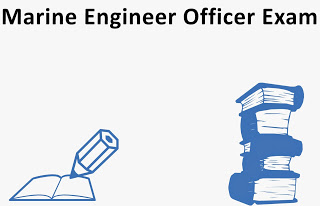This article discusses about fire which is a very common phenomenon yet a dangerous one. How to prevent fire? Well there are several practices which if are followed will never lead to outbreak of fire. In this article you will also get to know about what types of equipment used to stop fire on board ship. Let’s discuss this article in detail.
Fire prevention accounts for 95 % part of which are related to fire and rest is firefighting. Fire have been a very serious matter when it comes to ships. So, it becomes imperative for every seafarer to have knowledge about how to prevent a fire from happening? There are many reasons for outbreak of fire like Negligence, lack of knowledge, lack of communication between two people etc. Taking care of any such an incident
becomes necessary on oil tankers, gas carriers etc. Here in this article we have given a detailed description about how whole process of fire, types and at last how to stop them. One more thing is that all the seafarer now has to comply with STCW 2010 manila amendments for fire fighting.
What is Fire?
This is a very short word, but among one of the disastrous phenomenon in human day to day life. Mainly we need three things to make a fire or leads to outbreak of fire which are namely: Air, Heat and combustion material. There are certain terminology that a mariner should know which are as follows:
Flash point: This is the lowest point at which the fuel or combustible material starts giving the flammable vapors.
Fire point: It is a temperature at which vapors coming out of a substance will catch fire if supplied with some external means of energy and material will keep on burning.
Auto ignition temperature: It is the temperature at which vapors coming out of a combustible material will ignite itself even without any application external energy.
Steps or methods to stop a fire
If we can remove any one part from these three (Air, Heat and combustion material), fire will stop. So there are couples of process which are followed to stop these three parts of fire. First step is smothering, in which we try to restrict fire getting oxygen. As we know that oxygen is helpful in combustion process, so eliminating this will certainly stop the fire. Process of restricting oxygen from participating in fire is called as process of
smothering. If we are able to achieve concentration of oxygen below 11 %, then fire stops. Next step is called as ‘starvation. In this step, combustible material is removed and hence fire no longer gets ignited. Cooling is another method by which heat of substances is reduced. This is the reason why fire fighting vehicles spray water on the fire affected site.
 |
| image courtesy:marinersgalaxy.com |
Inhibition method is used to prevent this chain reaction to go on. Here chain reaction means process taking place due to three parts of
fire.
Types or Classes of fire: Fire Fighting
There are different types of fire and we classify them in different classes. We classify FIRE as Find, Inform, Restrict and Extinguish. Fire equipment are also discussed below.
Class A: Fire caused due to the involvement of or related to clothes, wood, paper is included in this type of fire. Water type fire extinguishers are used to put off these fires and this process is called as ‘Cooling’.
Class B: Fire related to liquids like petroleum products, paints etc are classified under this category. Foam and CO2 type fire extinguishers are
used to put off these types of fires and these processes are called as
‘Smothering’, ‘Cooling’.
Class C: Fire related to gas like LPG, LNG, Acetylene etc are put under this type. Dry Chemical Powder types of fire extinguishers are used to put off these types of fires and these processes are called as ‘Inhibition’.
Class D: Metal fire come under this category. Special type of Dry Chemical Powder (DCP) types of fire extinguishers are used to put off these types of fires.
Class E: Electrical fires are put under this category and DCP fire extinguishers come handy in these types of fires.
Conclusion
So, this was all in the fire section. There are several other articles which will be shortly available on this site. So, stay tuned to this site and I hope you liked it. This was all from Fire Prevention and Fire Fighting on Ship.



